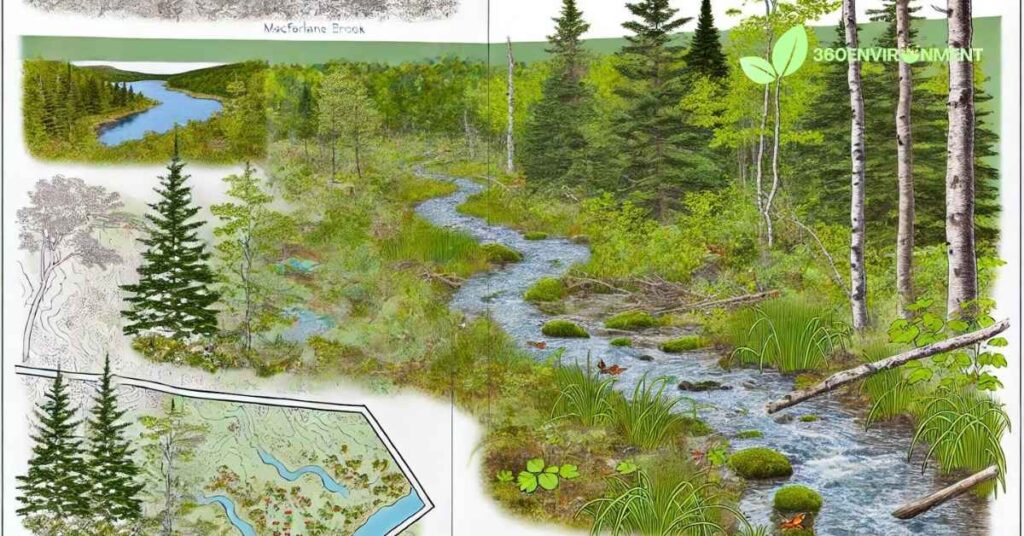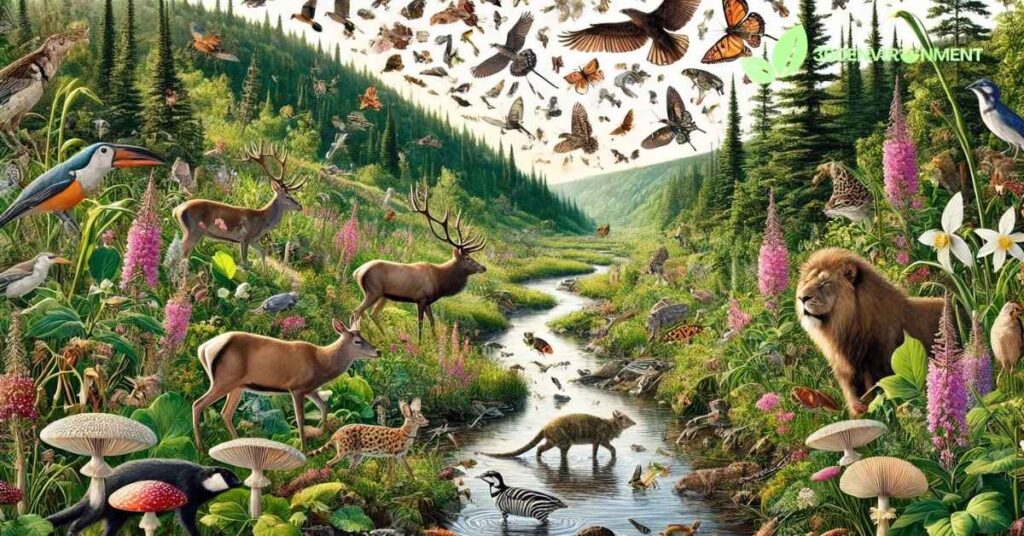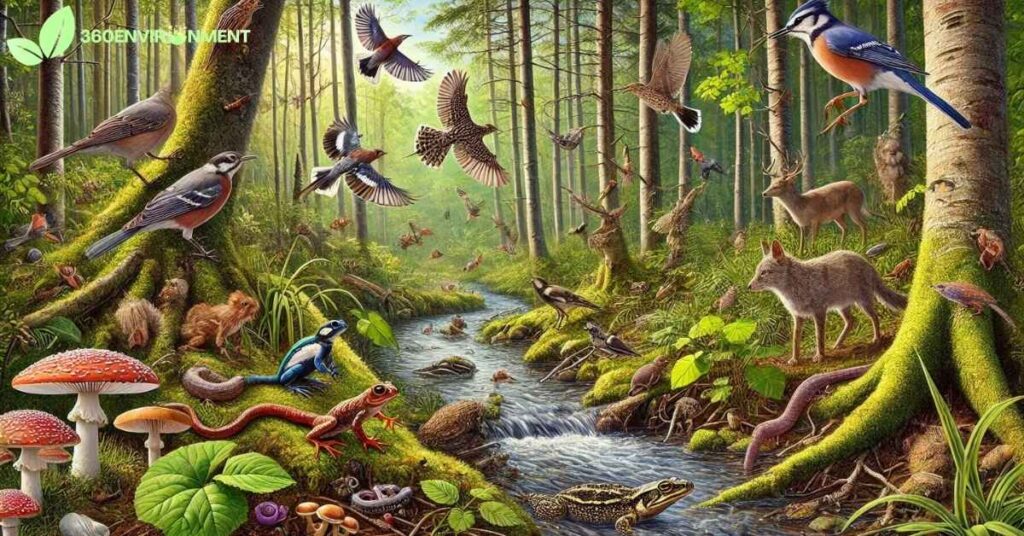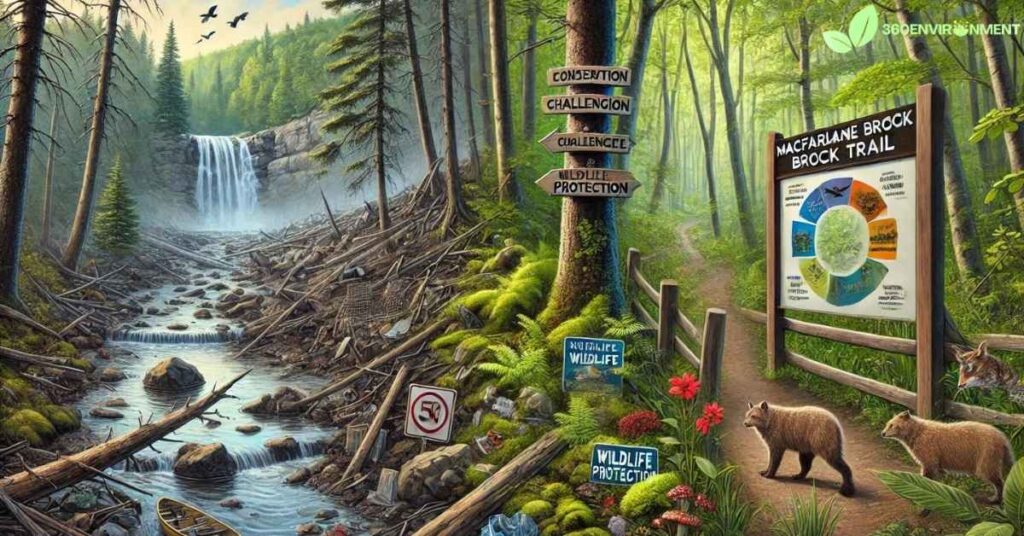The MacFarlane Brook Trail is a hidden gem nestled within the vast wilderness of North America, offering a rich blend of natural beauty, biodiversity, and ecological significance. Winding through dense forests, along pristine streams, and past diverse habitats, the trail offers a unique opportunity to explore various ecosystems that sustain a wide range of species. The environmental niche surrounding MacFarlane Brook Trail represents an interconnected web of plant and animal life, water systems, soil composition, and human interaction, all of which contribute to the preservation and sustainability of this natural environment.
In this article, we’ll delve into the environmental niche of MacFarlane Brook Trail by examining its habitat, ecosystems, biodiversity, species interactions, and conservation challenges. By understanding the trail’s ecological importance, we can gain a better appreciation for the efforts being made to protect this unique environment.
1. Overview of MacFarlane Brook Trail
MacFarlane Brook Trail is located within a richly forested region, offering visitors the chance to explore a natural landscape that is largely untouched by human development. Whether the trail is part of a larger national or regional park or exists as a stand-alone natural area, it is characterized by its proximity to MacFarlane Brook, a freshwater stream that runs parallel to or intersects with the trail at various points.

1.1 Geographic Location and Terrain
The geographic location of MacFarlane Brook Trail places it within the broader biome of temperate forests, which are defined by their seasonal climate, mixed deciduous and coniferous tree species, and rich undergrowth. The trail’s elevation may vary, offering a mixture of flat areas alongside steep, rocky inclines.
- Forested Ecosystems: The trail meanders through dense woodlands dominated by tall trees, including species such as oak, maple, birch, and pine. The forest canopy provides a cool, shaded environment, while the understory is filled with ferns, mosses, and shrubs.
- Water Systems: MacFarlane Brook, the stream that gives the trail its name, is a vital part of the area’s ecosystem. The stream’s water flow, clarity, and temperature influence the surrounding habitats, supporting a variety of aquatic and terrestrial life.
- Soil Composition: The soil around MacFarlane Brook Trail is nutrient-rich due to the regular deposition of organic material from the forest. Fallen leaves, decaying plant matter, and the decomposition of organisms create a fertile environment that supports the diverse plant life along the trail.
1.2 Climate and Weather Patterns
The MacFarlane Brook Trail region experiences a temperate climate with distinct seasonal changes. This climate supports a wide variety of flora and fauna, creating a highly dynamic ecosystem.
- Spring and Summer: In the warmer months, the trail comes alive with growth. Trees leaf out, wildflowers bloom, and wildlife becomes more active. The brook swells with melted snow from higher elevations, creating faster-moving water in spring, while summer sees more stable stream conditions.
- Fall: Fall is marked by the vibrant colors of changing leaves, particularly in the deciduous sections of the forest. Cooler temperatures trigger migration patterns for birds and other animals, while plant growth slows in preparation for winter.
- Winter: The trail and its surrounding environment undergo significant changes in winter, with heavy snow cover in some regions and the freezing of smaller streams. Many animals enter hibernation, and the overall activity of the ecosystem decreases, although some species, like certain birds and mammals, remain active.
2. Habitat and Ecosystem Diversity Along MacFarlane Brook Trail
MacFarlane Brook Trail encompasses a wide range of habitats that support a high level of biodiversity. The key habitats found along the trail include deciduous and coniferous forests, riparian zones (areas along the stream), and wetland regions. Each of these habitats plays a unique role in maintaining the ecological balance of the region.

2.1 Forest Ecosystems
The forested areas along MacFarlane Brook Trail are primarily composed of temperate deciduous trees, with interspersed coniferous patches. These ecosystems are essential for the local biodiversity, providing food, shelter, and nesting sites for numerous species.
- Canopy Trees: Large trees like oaks, maples, and birches dominate the canopy, creating a complex structure of branches that house birds, squirrels, and insects. The leaf litter that falls to the forest floor enriches the soil, supporting various understory plants.
- Understory Vegetation: The understory consists of shrubs, small trees, and ferns. Plants like mountain laurel, blueberries, and wildflowers thrive in the dappled light beneath the canopy. These plants provide food for herbivores such as deer, rabbits, and insects.
- Forest Floor: The forest floor is home to decomposers like fungi, bacteria, and insects that break down organic matter, recycling nutrients back into the soil. This layer is critical for the health of the entire forest ecosystem.
2.2 Riparian Zones and Water Habitats
The riparian zones along MacFarlane Brook are critical for supporting both aquatic and terrestrial life. These areas are where the land meets the water, creating habitats that are rich in nutrients and biodiversity.
- Aquatic Life: MacFarlane Brook itself supports a range of aquatic organisms, from small invertebrates like mayflies and caddisflies to fish such as brook trout. The clear, cold water of the stream provides an ideal habitat for these species, which rely on the oxygen-rich water for survival.
- Vegetation and Erosion Control: Plants along the stream’s edge, including willows, alders, and sedges, play an important role in stabilizing the soil and preventing erosion. Their roots help to hold the soil in place, while their leaves and branches provide shade, regulating the temperature of the stream and offering shelter for wildlife.
- Amphibians and Reptiles: The riparian areas are also home to amphibians like salamanders and frogs, which depend on the moist environment for breeding and shelter. Reptiles such as turtles and snakes may also be found basking near the water’s edge.
2.3 Wetlands and Marshlands
Wetlands and marshlands along MacFarlane Brook Trail offer a unique habitat that is crucial for flood control, water filtration, and biodiversity. These areas often act as buffers, absorbing excess water during periods of heavy rain or snowmelt.
- Flora: Wetlands are home to specialized plant species that are adapted to water-saturated soils, such as cattails, bulrushes, and sedges. These plants not only provide habitat for wildlife but also filter pollutants from the water, improving water quality.
- Bird Life: Wetlands are vital for bird species, particularly migratory waterfowl such as ducks, geese, and herons. These birds rely on wetlands for breeding, feeding, and resting during migration.
- Mammals: Larger mammals like beavers play an important role in shaping wetland habitats by building dams that alter water flow and create new wetland areas. Other mammals, like otters and muskrats, use the wetlands for hunting and shelter.
3. Biodiversity and Species Interactions Along the Trail
MacFarlane Brook Trail is home to a rich array of plant and animal species, many of which interact in complex ways to form a balanced ecosystem. The trail’s biodiversity is supported by its diverse habitats, which provide resources for herbivores, carnivores, omnivores, and decomposers.

3.1 Plant Species
The diversity of plant species along MacFarlane Brook Trail is a key factor in supporting the area’s wildlife. The availability of different plant types, from trees to shrubs to ground-cover plants, ensures that animals have access to food throughout the year.
- Deciduous Trees: Species like oak, hickory, and maple provide food for herbivores in the form of acorns, seeds, and leaves. These trees also produce large amounts of leaf litter, which supports a range of detritivores.
- Coniferous Trees: Pine and spruce trees provide important habitat for bird species, particularly during winter when deciduous trees lose their leaves. Their cones also provide food for small mammals and birds.
- Wildflowers and Grasses: In more open areas, wildflowers and grasses thrive, offering nectar and pollen for pollinators such as bees, butterflies, and other insects. These plants are also a food source for herbivores like deer and rabbits.
3.2 Animal Species
A wide variety of animals can be found along MacFarlane Brook Trail, ranging from large mammals to small invertebrates. These animals form intricate food webs that are essential to the ecosystem’s health.
- Mammals: White-tailed deer, black bears, foxes, and raccoons are just a few of the larger mammals that call the trail home. These animals rely on the forest for shelter and food, with herbivores feeding on plants and carnivores preying on smaller animals.
- Birds: MacFarlane Brook Trail is a haven for birdwatchers, offering sightings of species such as woodpeckers, hawks, owls, and songbirds. Migratory birds use the trail’s wetlands and forests as stopover points during their journeys, while resident species nest and raise young in the trees and shrubs.
- Insects and Pollinators: Insects play a crucial role in the ecosystem as pollinators and decomposers. Bees, butterflies, and moths pollinate wildflowers, while beetles, ants, and flies break down dead plant and animal material, returning nutrients to the soil.
4. Ecological Interactions Along MacFarlane Brook Trail
The ecological interactions between species along MacFarlane Brook Trail are vital for maintaining the balance of the ecosystem. These interactions include predation, herbivory, competition, and mutualism, all of which contribute to the health of the environment.

4.1 Predator-Prey Relationships
Predator-prey dynamics are a key component of the food web along the trail. Carnivores like foxes, hawks, and snakes hunt smaller animals, controlling their populations and preventing overgrazing or overpopulation.
- Mammalian Predators: Foxes and raccoons are common predators in the area, feeding on small mammals like mice, voles, and rabbits. These animals help regulate herbivore populations, preventing them from depleting plant resources.
- Avian Predators: Hawks and owls prey on small birds and mammals, as well as amphibians and reptiles. Their presence ensures that prey species do not grow too numerous, maintaining a healthy balance in the ecosystem.
4.2 Herbivory and Plant Consumption
Herbivores along the trail, including deer, rabbits, and insects, feed on the various plant species found in the forest and wetlands. This herbivory is an essential part of the ecosystem, as it helps cycle nutrients and control plant growth.
- Deer Browsing: White-tailed deer are the primary herbivores in the region, feeding on leaves, shoots, and bark. While their browsing can sometimes lead to overgrazing, natural predators and human management help keep their populations in check.
- Insect Herbivores: Insects such as caterpillars, beetles, and grasshoppers feed on leaves and stems, playing an important role in nutrient cycling. These insects also serve as a food source for birds and small mammals.
4.3 Mutualistic Relationships
Mutualistic interactions, in which two species benefit from each other’s presence, are common along MacFarlane Brook Trail. These interactions contribute to the overall health and productivity of the ecosystem.
- Pollination: Bees and butterflies pollinate wildflowers, ensuring the plants’ reproduction while obtaining nectar and pollen for food. This interaction supports both plant diversity and insect populations.
- Seed Dispersal: Animals like squirrels, birds, and deer play a key role in seed dispersal. By consuming fruits and nuts, these animals help spread seeds throughout the forest, allowing new plants to grow.
5. Conservation Challenges and Efforts
Despite its ecological richness, MacFarlane Brook Trail faces several environmental challenges. Human activities, climate change, and habitat fragmentation all pose threats to the trail’s ecosystems. However, conservation efforts are underway to protect this unique environment.

5.1 Human Impact and Habitat Fragmentation
As more people visit and explore MacFarlane Brook Trail, there is a risk of human impact, including habitat degradation, litter, and disturbance to wildlife. The construction of nearby roads or infrastructure can also fragment habitats, making it harder for animals to move freely between different areas of the forest.
- Trail Management: To mitigate these impacts, trail management practices focus on minimizing human disturbance. This includes limiting the development of new trails, educating visitors about responsible behavior, and enforcing regulations to protect wildlife.
- Habitat Restoration: Efforts to restore damaged areas of the trail, such as replanting native vegetation and controlling invasive species, help maintain the integrity of the ecosystem.
5.2 Climate Change
Climate change poses a significant threat to ecosystems along MacFarlane Brook Trail. Rising temperatures, changes in precipitation patterns, and the increased frequency of extreme weather events can alter the composition of plant and animal communities.
- Species Shifts: As temperatures rise, some species may be forced to move to higher elevations or cooler regions. This can disrupt existing ecological interactions and lead to the loss of biodiversity in certain areas.
- Stream and Wetland Health: Climate change can also affect water availability in streams and wetlands. Changes in precipitation patterns may lead to reduced water flow in the brook, which could harm aquatic species and reduce the availability of water for riparian habitats.
5.3 Conservation Efforts and Community Involvement
Conservation efforts are crucial for the long-term preservation of MacFarlane Brook Trail’s ecosystems. Local communities, conservation organizations, and government agencies are working together to protect this valuable natural resource.
- Wildlife Monitoring: Ongoing monitoring programs track the health of wildlife populations and habitats along the trail. This data helps guide conservation actions, such as managing invasive species or restoring degraded areas.
- Public Education: Educating the public about the importance of biodiversity and conservation is a key component of protecting the trail. Visitors are encouraged to practice “Leave No Trace” principles, respect wildlife, and support conservation initiatives.
6. Conclusion
MacFarlane Brook Trail offers a unique opportunity to explore the natural world while also providing essential ecosystem services that benefit both wildlife and humans. From its forested landscapes to its riparian zones and wetlands, the trail is home to a diverse array of species and plays a critical role in maintaining biodiversity.
Understanding the environmental niche of MacFarlane Brook Trail allows us to appreciate the complex interactions that take place within its ecosystems. Through ongoing conservation efforts and responsible stewardship, we can ensure that this remarkable natural area continues to thrive for generations to come.
Read More: Jones Creek: An Exploration of its Environmental Niche and Ecological Significance
